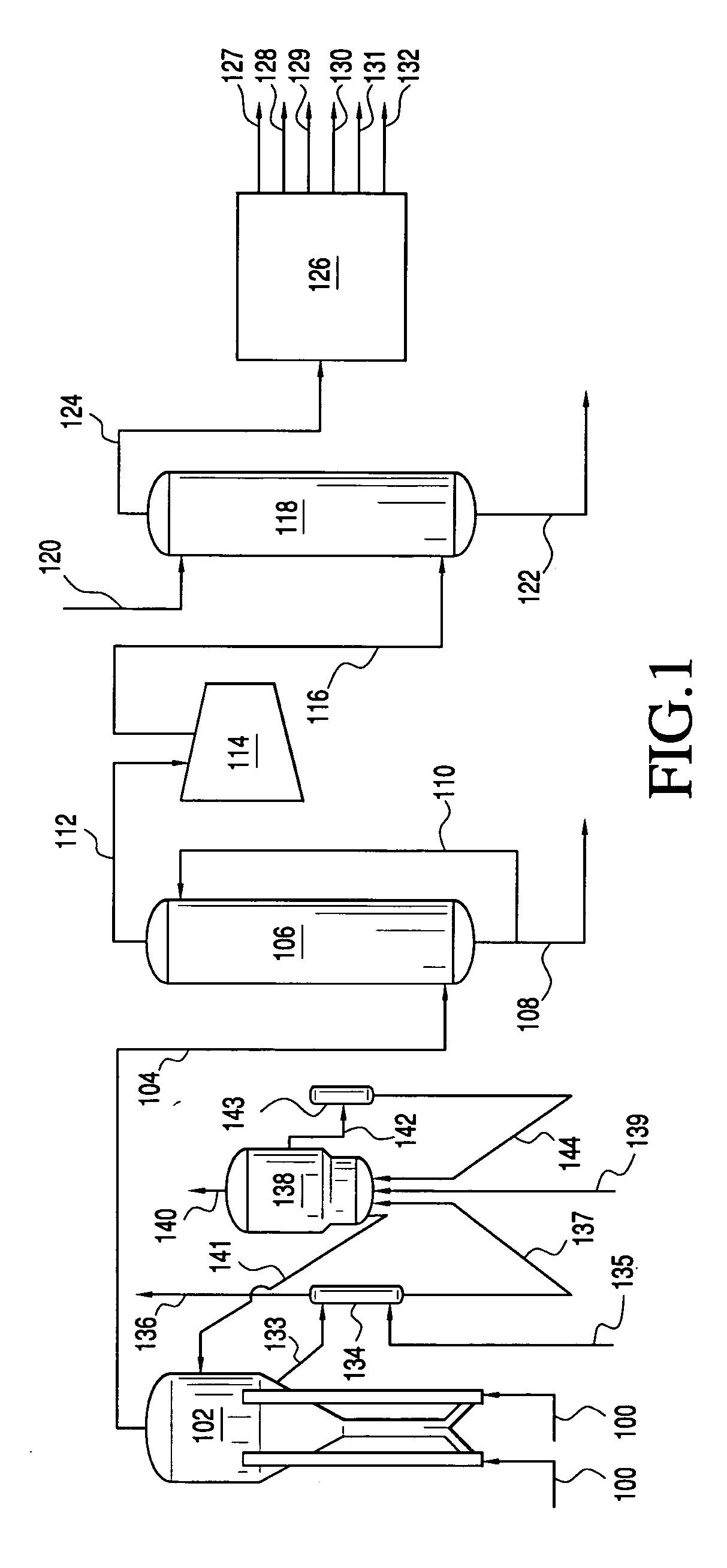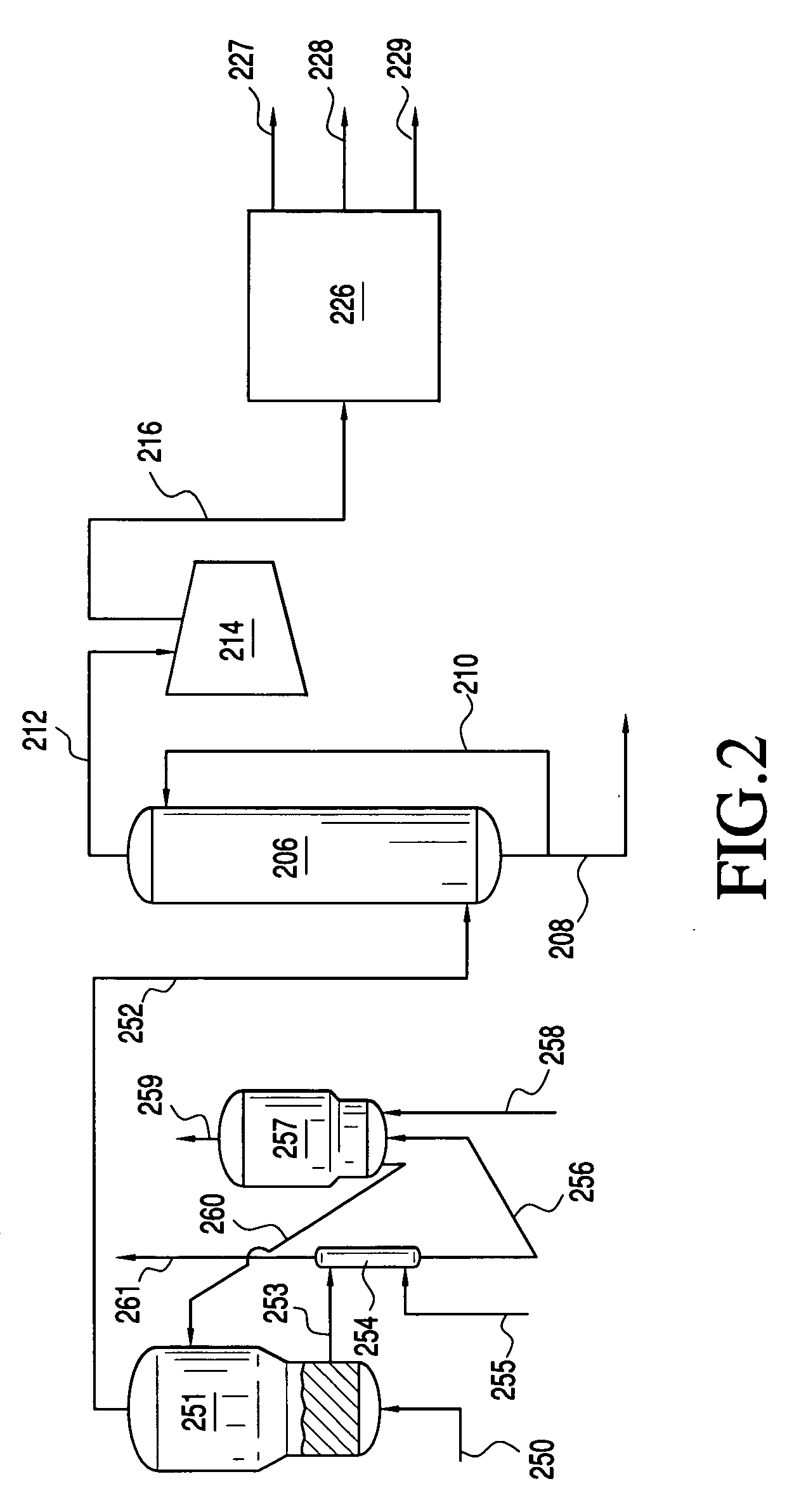Converting methanol and ethanol to light olefins
a technology of methanol and ethanol, which is applied in the direction of organic chemistry, chemical apparatus and processes, hydrocarbon preparation catalysts, etc., can solve the problems of undesirable side reaction byproducts of ethanol in the alcohol-containing feedstock, large amount of acetaldehyde byproducts, and difficult removal of light olefin-containing effluents, so as to minimize undesirable side reaction effects
- Summary
- Abstract
- Description
- Claims
- Application Information
AI Technical Summary
Benefits of technology
Problems solved by technology
Method used
Image
Examples
Embodiment Construction
[0045] A. Introduction
[0046] The present invention, in one embodiment, provides processes for producing light olefins from a feedstock comprising methanol and ethanol. In one embodiment, at least a portion of the ethanol is dehydrated in a first reactor to form a first effluent comprising ethylene, methanol, water and less than about 2 weight percent acetaldehyde, based on the total weight of the first effluent. The methanol in the first effluent contacts a molecular sieve catalyst composition in a second reactor under conditions effective to convert the methanol to additional light olefins.
[0047] In another embodiment, the feedstock is separated into a methanol containing stream and an ethanol containing stream. These streams are then converted to light olefins in a methanol to olefins (MTO) reactor and an ethanol to ethylene (ETE) reactor, respectively, which operate in parallel. The subsequently formed effluent streams are then optionally combined and directed to a single separ...
PUM
| Property | Measurement | Unit |
|---|---|---|
| Percent by mass | aaaaa | aaaaa |
| Percent by mass | aaaaa | aaaaa |
| Percent by mass | aaaaa | aaaaa |
Abstract
Description
Claims
Application Information
 Login to View More
Login to View More - R&D
- Intellectual Property
- Life Sciences
- Materials
- Tech Scout
- Unparalleled Data Quality
- Higher Quality Content
- 60% Fewer Hallucinations
Browse by: Latest US Patents, China's latest patents, Technical Efficacy Thesaurus, Application Domain, Technology Topic, Popular Technical Reports.
© 2025 PatSnap. All rights reserved.Legal|Privacy policy|Modern Slavery Act Transparency Statement|Sitemap|About US| Contact US: help@patsnap.com



